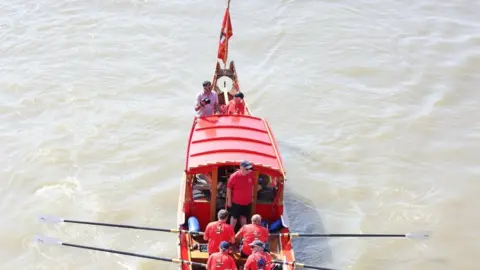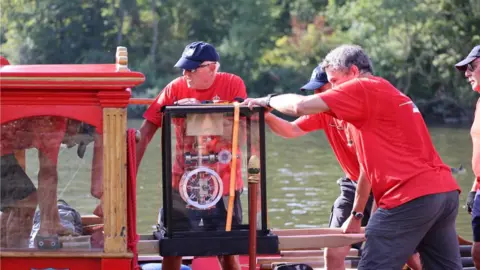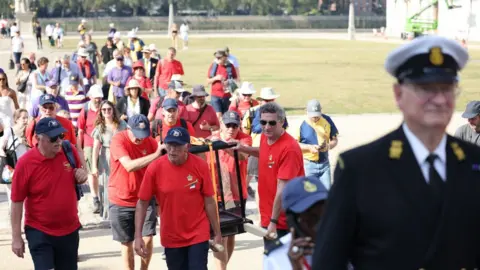Flotilla of boats carries atomic clock on Thames
 NPL
NPLMany important cargo journeys take place every day in London.
But the River Thames is perhaps the choice for the most special deliveries - including an optical atomic clock.
A flotilla of 15 boats, led by royal barge Jubilant, has carried the extremely precise clock from Isleworth to Greenwich in south-east London.
The unique object has been given to Royal Museums Greenwich by the National Physical Laboratory (NPL) to mark the relationship between the institutions.
 NPL
NPLThe clock, which uses an electronic transition frequency to tell the time, made an almost identical journey to one in 2002, when the first Jubilant flotilla presented a caesium atomic clock that had been rowed down the Thames.
The NPL said its latest optical clocks were more than 100 times more accurate than earlier iterations.
The clock presented to the museum on Saturday is due to go on display soon, giving the public an opportunity to learn about its role in the UK's timekeeping history.
 NPL
NPLLeon Lobo, head of the National Timing Centre at NPL, said: "The UK has long been innovators in global timekeeping: Harrison's clocks enabling precise global navigation in the 18th Century, GMT as the global time scale in the 19th, the first accurate atomic clock supporting the transition to atomic time in the 20th, and the next generation of optical atomic clocks for future satellite navigation systems in the 21st.
"This celebration reinforces NPL's close relationship with the Royal Museums Greenwich and showcases the criticality of time in our daily lives."
Paddy Rodgers, CEO of Royal Museums Greenwich, said: "We are proud of our long relationship with National Physical Laboratory and delighted to welcome this remarkable clock to into our extensive collection, where it will benefit both researchers and the public alike."

Follow BBC London on Facebook, Twitter and Instagram. Send your story ideas to [email protected]
